What is the difference between the D amp chips?
Is the CS8673 inferior to the TPA3116?
I cannot read Chinese Data sheet - who can say something on this chip?
@Karlsonate gave me a hint:
https://www.diyaudio.com/community/threads/unboxing-zk-mt21-tpa3116.403857/post-7467281
Some subjective comparison between mini amps:
https://www.diyaudio.com/community/threads/unboxing-zk-mt21-tpa3116.403857/post-7501910
Is the CS8673 inferior to the TPA3116?
I cannot read Chinese Data sheet - who can say something on this chip?
@Karlsonate gave me a hint:
https://www.diyaudio.com/community/threads/unboxing-zk-mt21-tpa3116.403857/post-7467281
Some subjective comparison between mini amps:
https://www.diyaudio.com/community/threads/unboxing-zk-mt21-tpa3116.403857/post-7501910
Ti chip seems to be a bit more distorted in the highs than the Chinese part. Not bad for a copy. If the data sheets tell the truth.
I just wanted to chime in since there is little info about these CS8673 chip amps.
I will not bother going into the tech specs already mentioned in the datasheet (by the way - Google Translate w/ your phone in "camera mode" shows you the PDF in plain english)....
I got a handful of these - originally purchased some TPA3116 boards that turned out to be fake. I noticed when the heat sinks fell off.
But here are some things I have actually noticed from a more subjective standpoint
1) I now prefer these over the TPA3116 chips for low power or midbass -> trebble duty.
2) They are dead quiet - less idle hiss than the 3116 chips I have used
3) The SOUND....
The quality of the sound that comes through these cheap-o chips is astounding. A bit airy, not too dry. They bring through all the detail without coloration.
I own many true HiFi amplifiers: Adcom, Rotel, Marantz, Sansui, Ashley (yeah..), Pioneer Elite, Sony ES, you name it. I even have a few of the mini amps from Douk Audio, and other similar China brands.
These CS8673 chips would fool me any day as to whether I am listening to the chip amp -vs- my Rotel gear. I swear they have the same sonic signatures.
Yeah... they are only good for 20-40 watts (depending on voltage and speaker impedance)... but the quality of sound they push out is really special.
This particular chip is now my Go-To for high-pass amplification (80hz on up). I am actually thinking of buying some of the chips via AliExpress in bulk and experimenting w/ rolling my own boards for my own projects.
Some things to note:
1) Unlike the 3116, these 8673 chips are cooled via the metal thermal pad on the BOTTOM of the ESOP16 package - i.e.: the PCB! So while a heat sink on the TOP helps, it is not as effective as good thermal contact with thick PCB. Beware!
2) These chips will certainly run without heatsink (on top) at lower voltages, but once you get above 12 volts, the chip starts running (idle even) warm.
3) At 19-24 volts, these chips REALLY heat up (even at idle). Even though the datasheet says no heat sink is required, it is..
4) I have run a few of these continously at rather high volume levels hours on end at 24 volts and have had zero failures thus far.
5) They do have a nasty power-on pop that bothers me a lot. My last couple projects incorporate a 555-based fast-reset delay-on circuit to keep the chip in "disable" state until 2 seconds after power is applied OR the moment power drops below 10 volts. This ensures absolutely NO power on OR off "pops".
6) The control / enable pin works opposite of the 3116 amps: when LOW, the chip is disabled and draws hardly any current. When brought up to around 3v, the amp is activated and plays sound as expected. Not sure what max voltage allowed on this pin is, but from the factory - this pin sits around 3 volts.
7) As with the 3116 board sound on AliExpress, ebay, etc.. The control pin is very easy to access by removing R2 on the PCB. From there, you can manually control (via circuit as I do) the power up and down to be smooth and noise-free.
Funny... these chips are used in the "clone / knock off" 3116 boards but actually sound better IMO
-Dean
I will not bother going into the tech specs already mentioned in the datasheet (by the way - Google Translate w/ your phone in "camera mode" shows you the PDF in plain english)....
I got a handful of these - originally purchased some TPA3116 boards that turned out to be fake. I noticed when the heat sinks fell off.
But here are some things I have actually noticed from a more subjective standpoint
1) I now prefer these over the TPA3116 chips for low power or midbass -> trebble duty.
2) They are dead quiet - less idle hiss than the 3116 chips I have used
3) The SOUND....
The quality of the sound that comes through these cheap-o chips is astounding. A bit airy, not too dry. They bring through all the detail without coloration.
I own many true HiFi amplifiers: Adcom, Rotel, Marantz, Sansui, Ashley (yeah..), Pioneer Elite, Sony ES, you name it. I even have a few of the mini amps from Douk Audio, and other similar China brands.
These CS8673 chips would fool me any day as to whether I am listening to the chip amp -vs- my Rotel gear. I swear they have the same sonic signatures.
Yeah... they are only good for 20-40 watts (depending on voltage and speaker impedance)... but the quality of sound they push out is really special.
This particular chip is now my Go-To for high-pass amplification (80hz on up). I am actually thinking of buying some of the chips via AliExpress in bulk and experimenting w/ rolling my own boards for my own projects.
Some things to note:
1) Unlike the 3116, these 8673 chips are cooled via the metal thermal pad on the BOTTOM of the ESOP16 package - i.e.: the PCB! So while a heat sink on the TOP helps, it is not as effective as good thermal contact with thick PCB. Beware!
2) These chips will certainly run without heatsink (on top) at lower voltages, but once you get above 12 volts, the chip starts running (idle even) warm.
3) At 19-24 volts, these chips REALLY heat up (even at idle). Even though the datasheet says no heat sink is required, it is..
4) I have run a few of these continously at rather high volume levels hours on end at 24 volts and have had zero failures thus far.
5) They do have a nasty power-on pop that bothers me a lot. My last couple projects incorporate a 555-based fast-reset delay-on circuit to keep the chip in "disable" state until 2 seconds after power is applied OR the moment power drops below 10 volts. This ensures absolutely NO power on OR off "pops".
6) The control / enable pin works opposite of the 3116 amps: when LOW, the chip is disabled and draws hardly any current. When brought up to around 3v, the amp is activated and plays sound as expected. Not sure what max voltage allowed on this pin is, but from the factory - this pin sits around 3 volts.
7) As with the 3116 board sound on AliExpress, ebay, etc.. The control pin is very easy to access by removing R2 on the PCB. From there, you can manually control (via circuit as I do) the power up and down to be smooth and noise-free.
Funny... these chips are used in the "clone / knock off" 3116 boards but actually sound better IMO
-Dean
I have a couple of these mono boards : https://www.aliexpress.com/item/1005004832326913.html I fed them balanced via an input trafo costing many times the price of the pair. Pretty impressive, the pair idles about 60mA on 20V which means each chip doing nothing is using about 0.6W. I did one immediate upgrade - the 470uF SMD cap with soso ESR is replaced by a 2200uF/25V.
One downside I noticed is the input is AC coupled and there's no AC ground reference brought out from the chip which means a trafo can't dispense with the input caps (which are 0603 X7Rs, far from ideal for audio). But that's a minor quibble at the price.
One downside I noticed is the input is AC coupled and there's no AC ground reference brought out from the chip which means a trafo can't dispense with the input caps (which are 0603 X7Rs, far from ideal for audio). But that's a minor quibble at the price.
@abraxalito
does your cs8673 sound similar nice like deanrantala described?
I wonder, too, because of more than acceptable absolute quality why using more expensive amps.
does your cs8673 sound similar nice like deanrantala described?
I wonder, too, because of more than acceptable absolute quality why using more expensive amps.
The amp I am using day to day is this one based on BTL TDA7294 with heroic power supply. When I swapped out to the CS8673 boards the first thing I noticed was a thinner sound. The low frequency ambience just wasn't there in the way it was with the TDA7294. But pretty much everything else was. This could of course be down to the power supply to a large degree, I haven't tried the CS8673 with a massive cap bank but perhaps I will.
Tried this amp with huge cap banks - around 80,000uF on each - and that doesn't really rescue it when compared to TDA8932 in an optimized implementation. Which of course is a much more complex circuit. So it won't be replacing any of my amps. But in terms of bang for the buck it is still excellent value.
Nice to hear its like this.
I got my 20euro amp in an offer for five bucks....
I use a 2.1 amp setup with cs8673 chips and with my marble corner placed low tuned reflex sub there is no bass shyness present.
I got my 20euro amp in an offer for five bucks....
I use a 2.1 amp setup with cs8673 chips and with my marble corner placed low tuned reflex sub there is no bass shyness present.
I don't mean to say the chip is lacking in quantity of bass (since you mentioned a sub), rather quality. Which I take to mean its bass isn't low noise enough, though that's just conjecture.
X7R coupling caps? I'm beginning to wonder if this is euphonic distortion...I have a couple of these mono boards : https://www.aliexpress.com/item/1005004832326913.html I fed them balanced via an input trafo costing many times the price of the pair. Pretty impressive, the pair idles about 60mA on 20V which means each chip doing nothing is using about 0.6W. I did one immediate upgrade - the 470uF SMD cap with soso ESR is replaced by a 2200uF/25V.
One downside I noticed is the input is AC coupled and there's no AC ground reference brought out from the chip which means a trafo can't dispense with the input caps (which are 0603 X7Rs, far from ideal for audio). But that's a minor quibble at the price.
This graph doesn't make sense unless they were limiting to something like 15 kHz bandwidth - does the data sheet say anything?CS8673 8 Ohm 24v but a bit different presentationView attachment 1283730
Generally, very low frequencies can be a problem if the reservoir caps are too small. Higher frequencies can be a problem because the feedback loop (if there is one) runs out of bandwitdh or because nonlinearities in the coils have greater impact.
In this graph, 1 kHz has higher distortion then 20 Hz, so reservoir was fine, and 1 kHz is beginning to show the issues associated with higher frequencies. The only way 10 kHz can be so much lower is that band limiting cuts off all the harmonics.
So.. I am moving forward with some project in which I plan to incorporate the CS8673.
The only info found for this chip officially is a datasheet that is only in Chinese. So I took the liberty to translate it to English as follows:
1) Original PDF was converted to PNG images (one image per page) using imagemagick/convert.
2) I sent each image individually through google translate
3) I did some minor touch up on the images where I felt it was most important
4) I then re-converted the images back into PDF format.
5) All files - the original PDF, PRE-translate PNGs, POST-translate PNGs and final [translated] PDF were neatly arranged and compressed as a single ZIP file.
I have placed the all-in-one zip file on my VPS for anyone to download HERE
If anyone wants to tweak that translation further, feel free. That ZIP file was evidentily too large to attach here (15M).
Additionally, I will post each of the photos for each page of the post-translation here for easy reference.
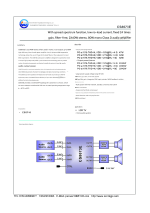
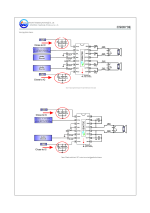
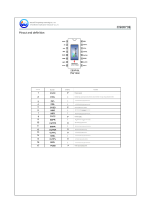
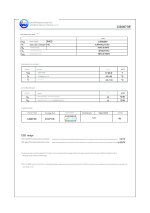
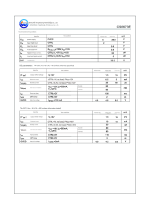
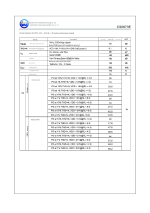
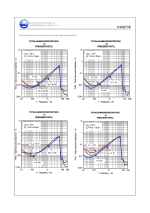
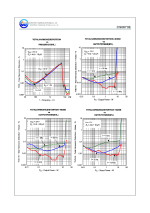

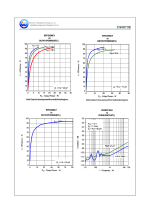
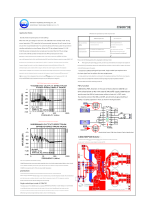
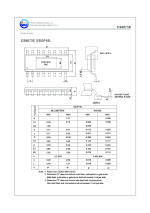
The only info found for this chip officially is a datasheet that is only in Chinese. So I took the liberty to translate it to English as follows:
1) Original PDF was converted to PNG images (one image per page) using imagemagick/convert.
2) I sent each image individually through google translate
3) I did some minor touch up on the images where I felt it was most important
4) I then re-converted the images back into PDF format.
5) All files - the original PDF, PRE-translate PNGs, POST-translate PNGs and final [translated] PDF were neatly arranged and compressed as a single ZIP file.
I have placed the all-in-one zip file on my VPS for anyone to download HERE
If anyone wants to tweak that translation further, feel free. That ZIP file was evidentily too large to attach here (15M).
Additionally, I will post each of the photos for each page of the post-translation here for easy reference.












I also just ordered 10 of these in bare ESOP16 form.
I plan designing some very simple breakout boards for the bare chip that can be used w/ normal single-sided PCB's and easy-to-assemble through-hole components. For those who like to tinker and integrate with other projects that may use - for example - normal old perf board (as I do a lot).
I will try to design (and test, obviously) TWO versions: one for stereo (two channel) operation as well as another for PBTL mono operation.
I plan to do the layout in KiCad. I am NOT by any means an EE and have no formal training in electronics. So my apologies ahead for any shortcomings.
All files created will be posted here free for anyone to tweak/modify/use as desired.
-Dean
I plan designing some very simple breakout boards for the bare chip that can be used w/ normal single-sided PCB's and easy-to-assemble through-hole components. For those who like to tinker and integrate with other projects that may use - for example - normal old perf board (as I do a lot).
I will try to design (and test, obviously) TWO versions: one for stereo (two channel) operation as well as another for PBTL mono operation.
I plan to do the layout in KiCad. I am NOT by any means an EE and have no formal training in electronics. So my apologies ahead for any shortcomings.
All files created will be posted here free for anyone to tweak/modify/use as desired.
-Dean
- Home
- Amplifiers
- Class D
- Difference between CS8673 and TPA3116